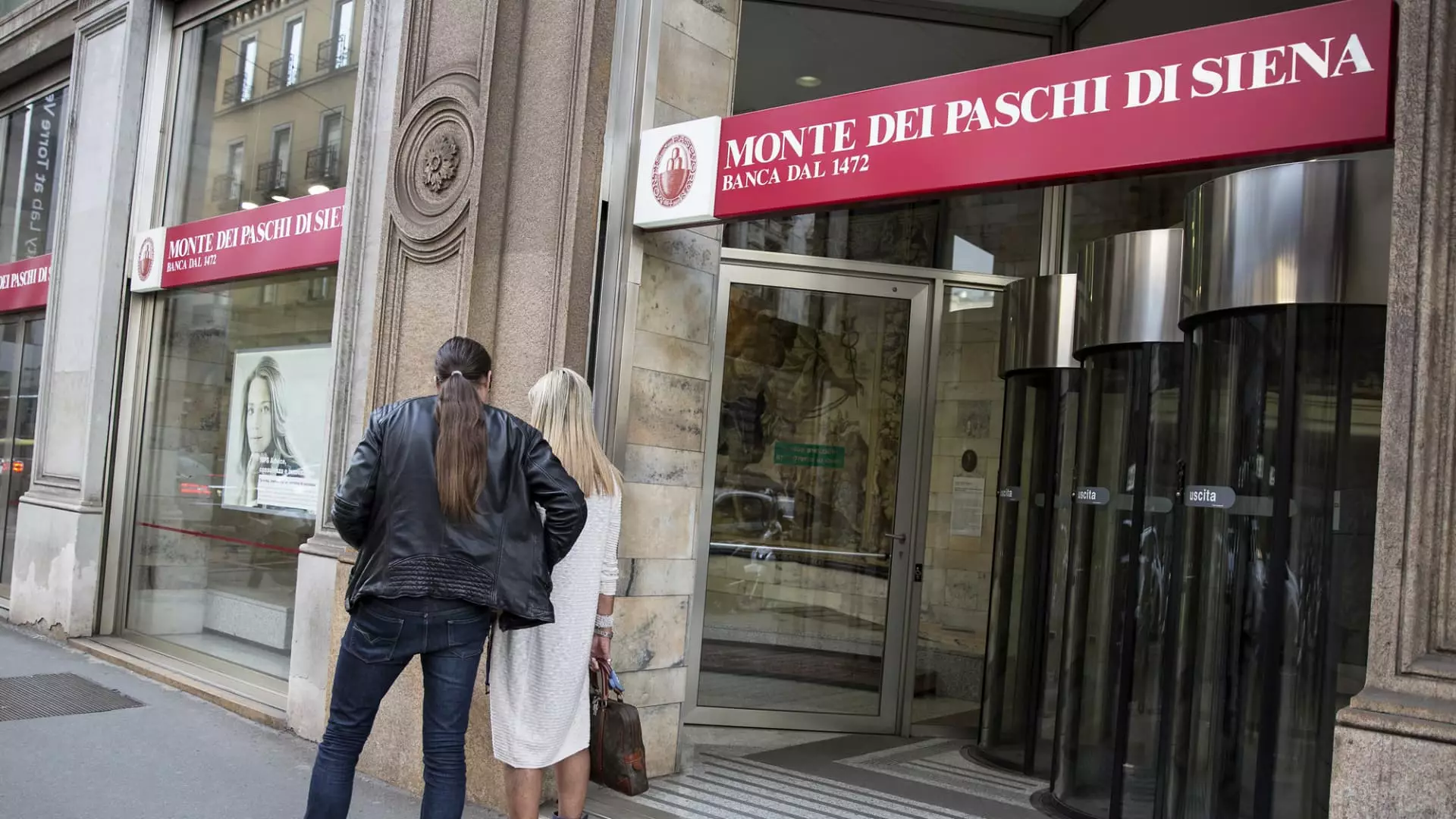In an age marked by uncertainty and financial tumult, the ambition of Monte dei Paschi di Siena (MPS) to acquire Mediobanca for an astounding 13 billion euros is both audacious and perplexing. The world’s oldest bank clings to its plans like a shipwrecked sailor to driftwood, determined to bolster its stature despite a tempestuous market landscape. It’s not just about aggressive ambition; it reflects a broader trend in banking that reveals a fascinating irony—while mergers and acquisitions are often touted as pathways to stability, they can equally spell disaster.
CEO Luigi Lovaglio insists MPS is “back in control of our destiny,” a triumphant proclamation that manages to overlook the dire realities surrounding the deal. The assertive tone may feel invigorating, but it is grounded in an unsettling context: MPS has seen better days. The unexpected all-share offer was a shock that raised more eyebrows than it received applause. By choosing to act amidst chaos, MPS not only risks its reputation but jeopardizes its financial health.
Risking Stability for Size
Lovaglio argues that current market conditions validate their expansion goals, suggesting that “size matters” in today’s economic climate. While diversification can indeed cushion against volatility, likening size to strength overlooks the critical aspect of compatibility. Mediobanca, esteemed for its wealth management and investment banking operations, is not merely an appendage to MPS; it is a different ecosystem altogether. Analysts in the financial sector have rightfully noted the lack of synergies between these two institutions. The ramifications of pushing this merger forward without a coherent strategy could spell disaster for MPS—a potential repeat of its 2017 bail-out by the Italian government.
Furthermore, the austerity mindset that drives MPS to pursue this acquisition reveals an unsettling obsession: in times of market convulsion, size is perceived as a shield, yet it can cloud judgment and lead to catastrophic miscalculations. The financial world has observed similar scenarios unfolding repeatedly, with institutions collapsing under the weight of mergers that were politically motivated rather than strategically sound.
The Market’s Response: A Vote of No Confidence
It’s telling that the market reacted negatively to the proposed acquisition, with shares of both MPS and Mediobanca dropping significantly around the same time the announcement was made. The root of investor skepticism is stark: can MPS truly deliver long-term value for its shareholders while sagging under the ambitious weight of such an acquisition? Its offer—labeled “destructive” by Mediobanca—points to the fragility of this strategy. The threat of reduced stakeholder confidence looms large, particularly when assessments from major banks suggest that investing further capital to secure the acquisition could harm MPS’s financial positioning. This could lead to a further erosion of trust, not just in this deal but within the Italian financial sector as a whole.
Since the prospective merger announcement, Mediobanca shares have seen a sharp decline of about 14%. Such a downturn sends a clear warning: there is no guarantee that a merger will yield the desired outcomes, a sentiment echoed by competing analysts, many of whom remain skeptical about the actual benefits of uniting two different financial powers.
Echoes of Consolidation
Lovaglio’s declaration positions this deal as part of a larger wave of consolidation within the Italian banking sector. Yet, the question remains: is this push toward consolidation a survival tactic for weak institutions, a misguided chase for size, or genuinely sound strategy? When UniCredit announced its intention to acquire Banco BPM, there was a sense of direction—a logical progression. But MPS’s pursuit of Mediobanca appears impulsively reactive rather than meticulously planned, and therein lies the true peril.
The financial sector, particularly in Italy, demands a more nuanced understanding of market dynamics. Consolidation brings with it not only greater resources but greater responsibility—the onus is on institutions to navigate their newfound complexities thoughtfully. MPS’s gambit may serve as a case study in overreach, where ambition laps at the shores of sanity.
As investors remain wary, one wonders if MPS’s aspirations for growth might lead them into choppy waters. Rather than merely curating size, a thoughtful strategy must prioritize stability, relevance, and alignment of purpose—all factors which, if ignored, could result in the fragility of MPS’s innovative claims to control its destiny. In pursuit of a beacon of hope, the bank might instead find itself ensnared in the very chaos it wished to escape.

